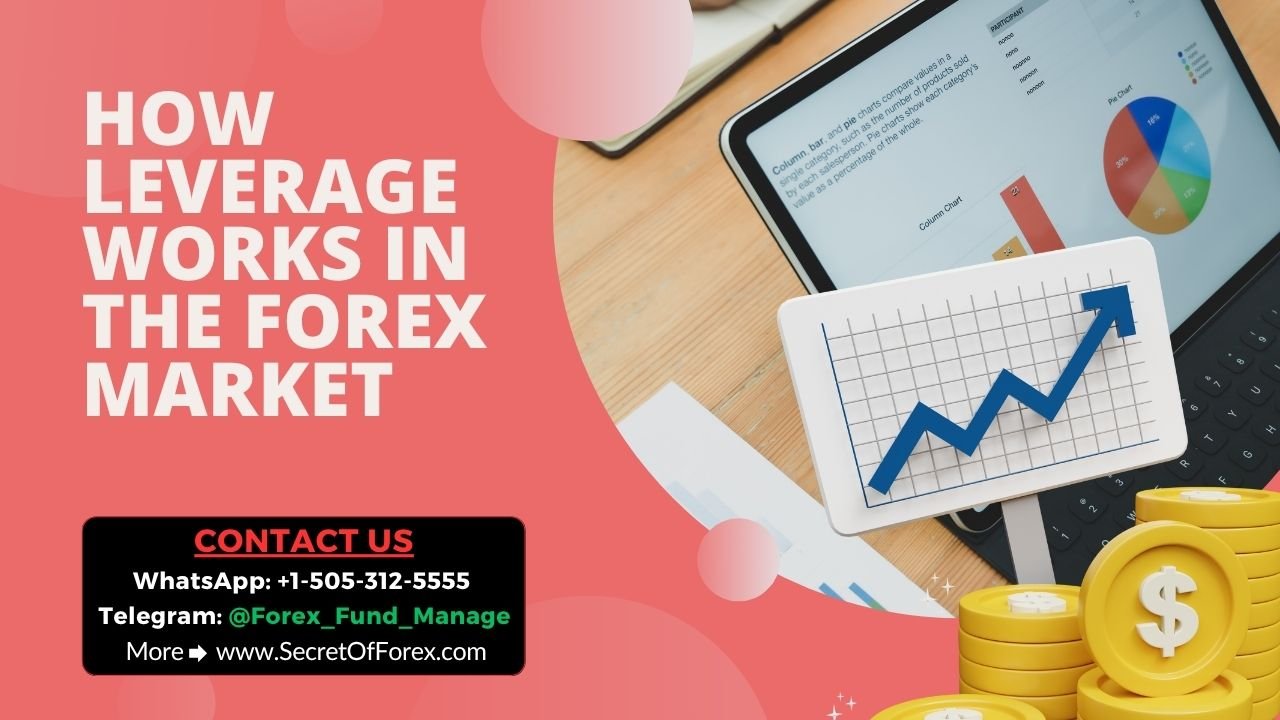Blog
How Leverage Works in the Forex Market
Leverage is one of the most effective instruments accessible to forex traders. It enables you to control a significant portion of the market with a modest investment. While it may dramatically increase your earnings, it can also magnify your losses. Understanding how leverage works is critical for every trader seeking success in the forex market. How Leverage Works in the Forex Market
In this article, we’ll explain what leverage is, how it works in forex trading, the advantages and hazards, and how to use it effectively.
Download Now Non-Repaint Indicator
Telegram Channel Visit Now
Fund Management Services Visit Now
What is leverage in forex – How Leverage Works in the Forex Market
Leverage in forex is a loan offered by your broker that allows you to create greater trading positions than your real trading capital would permit.
For example:
- With \$1,000 in your account and 1:100 leverage, you can manage a position worth \$100,000.
The leverage ratio is represented as follows:
- 1:10, 1:50, 1:100, 1:500, etc.
How Leverage Works: A Simple Example
Let we assume:
- You have around $1,000 in your FX account.
- You intend to trade EUR/USD.
- Your broker provides 1:100 leverage.
With 1:100 leverage, you can open up to:
- \$1,000 x 100 = \$100,000
For every \$1 you have, you may exchange \$100 on the market.
Assume EUR/USD moves by 1% in your favor.
- Profit = 1% of $100,000 = $1,000.
You just quadrupled your money with a 1% price change. If the deal goes 1% against you, you will lose \$1,000, which is your whole capital.
Margin and Leverage: Connection
To employ leverage, you must have a certain amount of money in your account, known as the margin.
Margin Requirement Example:
- If the leverage ratio is 1:100, the margin requirement is 1%.
- To execute a \$100,000 deal, your account must hold \$1,000 (1% of \$100,000).
Margin is similar to a security deposit. If your losses surpass this amount, your broker may make a margin call or close your transaction automatically.
Benefits of Leverage in Forex Trading
1: Increased Profit Potential
- Controlling larger holdings allows you to produce more returns with less cash.
2. Low capital requirements
- Leverage enables you to join the forex market without requiring thousands of dollars up front.
3: Diversification
- With increased purchasing power, you may establish many positions and diversify your transactions.
4: Short-Term Opportunities
- With minimal cash, intraday and scalping tactics become more feasible due to leverage.
The Risks of Using Leverage – How Leverage Works in the Forex Market
1. Amplified Losses
- Leverage raises earnings while also multiplying losses. A minor negative price change might wipe out your account.
2. Marginal Calls
- If your transaction goes against you and your margin level falls too low, the broker may require you to deposit more cash or terminate your deal.
3. Overtrading
- Excessive leverage might result in emotional choices and risky trading behavior.
4: False Sense of Security
- New traders may overestimate their market dominance and fail to implement suitable risk management strategies.
Use Leverage Wisely
1. Understanding Your Risk Tolerance
- Never bet more than you can afford to lose. Use leverage that is appropriate for your trading style and skill level.
2. Use stop-loss orders
- Always set a stop-loss to reduce possible losses. This safeguards your capital in unpredictable markets.
3. ** Begin with Low Leverage**
- Beginners should begin with modest leverage ratios (e.g., 1:10 or 1:20) to acquire experience.
4. Monitor Margin Level
- Always monitor your margin level to prevent surprise margin calls.
5. Practice on a demo account
- Use a demo account to get experience using leverage in real-time market situations without risking real money.
Leverage Regulations by Region – How Leverage Works in the Forex Market
Different nations and regulatory agencies set restrictions on the amount of leverage brokers may offer:
USA (CFTC/NFA) – Maximum leverage of 1:50 for key pairings.
UK/EU (FCA/ESMA) – Maximum leverage is 1:30 for retail customers.
- Australia (ASIC) – Maximum leverage is 1:30.
Unregulated Brokers – Can provide up to 1:1000, but with larger risks.
Download Now Non-Repaint Indicator
Telegram Channel Visit Now
Fund Management Services Visit Now
Conclusion
Leverage is a two-edged sword in forex trading. While it allows traders to increase earnings with less cash, it also exposes them to huge dangers. Understanding how leverage works, limiting your risk, and employing protective mechanisms such as stop-losses can allow you to exploit leverage to your benefit while avoiding its risks.
For long-term success, handle leverage with respect. Trade wisely, continue to learn, and never risk more than you are prepared to lose.


